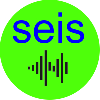Geophysical Methods
exploration, near surface and marine methods
Seismology |
Seismic exploration |
Seismic source |
Seismic Refraction |
Seismic Reflection |
Seismic MASW-REMI |
Borehole |
Marine Seismic |
Seismic Processing-Imaging |

Applied seismology
..... to pick up and record the vibrations of the earth that occur during an earthquake. However, it wasn't until 1921 that this technology was applied to the petroleum industry and used to help locate underground oil formations. Mintrop obtained the first patent for a portable seismograph in 1919 and founded the first company able to carry out seismic refraction surveys. The basic concept of seismology is quite simple. As the Earth's crust is composed of different layers, each with its own properties, energy (in the form of seismic waves) traveling underground interacts differently with each of these layers. These seismic waves, emitted from a source, will travel through the earth, but also be reflected back towards the source by the different underground layers. It is this reflection that allows for the use of seismology in discovering the properties of underground geology. Until the 1980's, reflection seismic acquisition was carried out by arranging the source and receivers in a line for a shot, then advancing the equipment along a linear transit as necessary to complete the survey. Geographic and cultural obstacles on the earth's surface frequently forced some deviation from this idealize acquisition pattern, but the end result was usually the acquisition of a 2-D seismic profile along a nearly linear transit.PASTE RESPONSIVE AD
Since the mid-1980's, improvements in computational power have made the acquisition and processing of 3-D seismic surveys a practical, though expensive, endeavor. Because geological structures are three dimensional in nature, 3-D acquisition and processing are usually desirable, or even necessary, to produce a proper representation of the subsurface. As a result, most seismic surveys and the vast majority of seismic data are now collected as 3-D surveys. The shift from 2-D acquisition to 3-D acquisition has had operational consequences that have greatly changed the nature of the seismic exploration industry. Because the facilities and equipment necessary for modern acquisition are very expensive, most seismic surveying is now carried out by a handful of large contracting companies. Because terabytes of data are acquired in medium size surveys, most data processing is also performed by contractors, and the client frequently only receives a processed and greatly compressed seismic image volume as a product for use in interpretation.
Around 1990, there was a double evolution in seismic surveys. Petroleum exploration crews had started using what are called "distributed systems" as the number of channels used became too great for the use of conventional geophone cables. At about the same time, the instruments used for shallow seismic surveys had developed capability sufficient for conducting reflection surveys, though on a much smaller scale. Besides the instrument, shallow reflection surveys needed the ability to "rollalong", which required a "rollalong switch". The used ones previously available from the oil and gas surveys were generally quite large and worn out.
PASTE RESPONSIVE AD